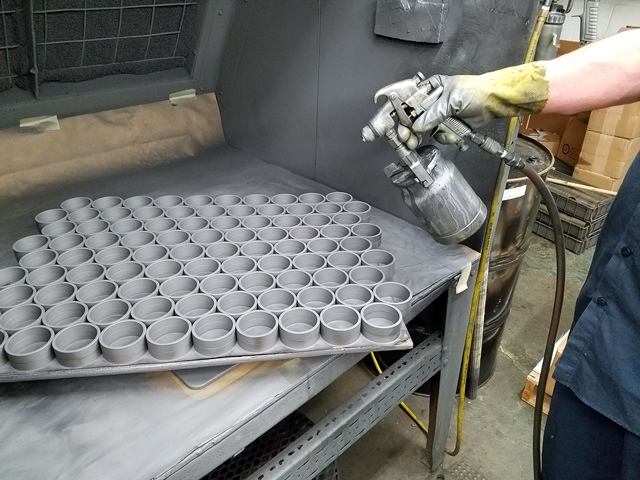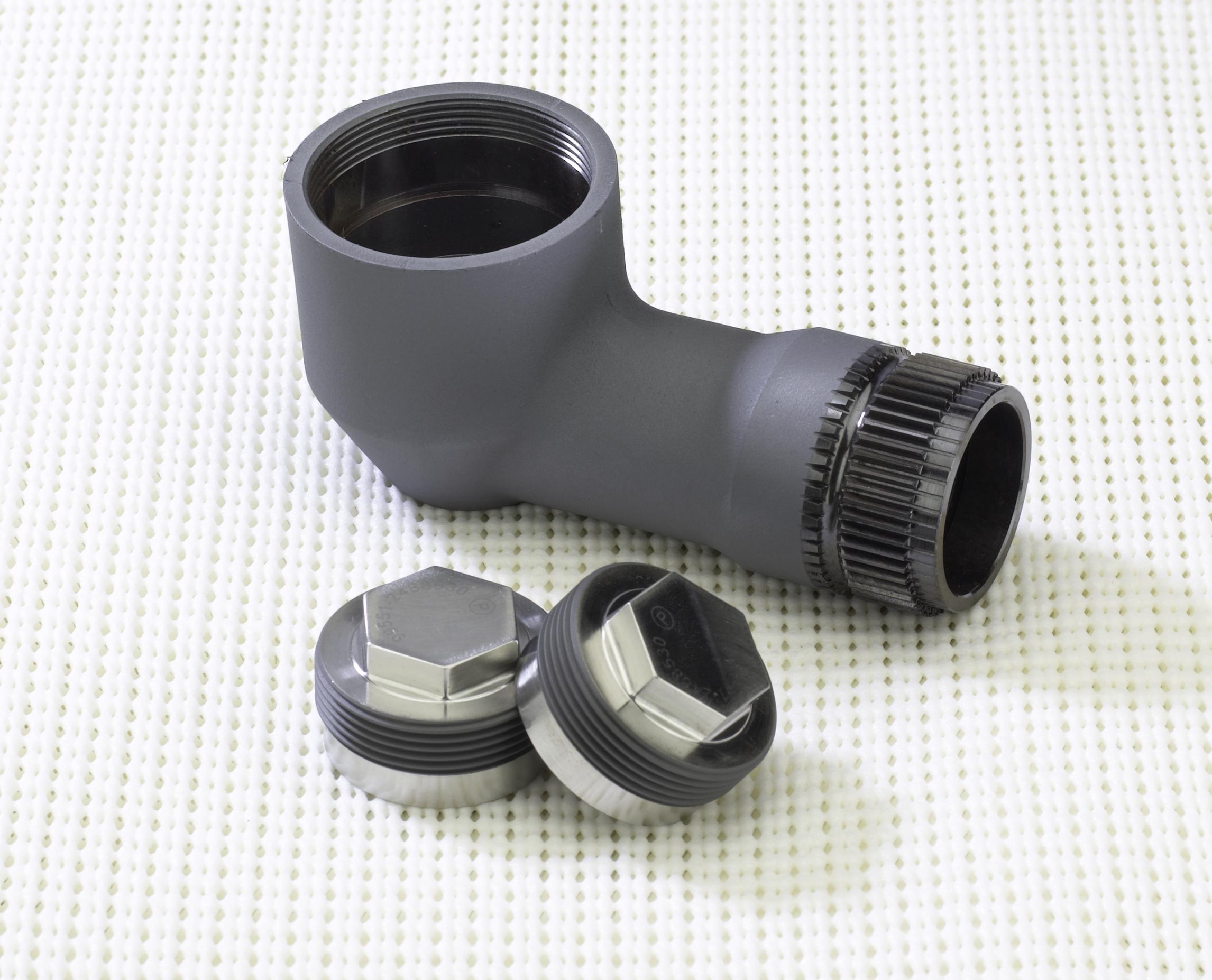Anoplate has been applying dry film lubricants, also referred to as solid film lubricants, for over 50 years but their use remains an anomaly. Dry film lubricants are elements or compounds with inherent lubricating properties which are semipermanently bonded to the surface of a material.
 These minerals or compounds include well known materials such as DuPont’s Teflon™ or more generically PTFE (polytetrafluoroethylene), graphite, and molydbenum disulfide (moly). These 3 materials are the most widely used and specified of the dry film lubes and their basic properties are shown in Table 1. Other lesser known materials include tungsten disulfide, boron nitride, antimony trioxide, talc, calcium fluoride and cerium fluoride. These naturally lubricious materials provide low frictional resistance between surfaces when applied directly to interacting faces.
These minerals or compounds include well known materials such as DuPont’s Teflon™ or more generically PTFE (polytetrafluoroethylene), graphite, and molydbenum disulfide (moly). These 3 materials are the most widely used and specified of the dry film lubes and their basic properties are shown in Table 1. Other lesser known materials include tungsten disulfide, boron nitride, antimony trioxide, talc, calcium fluoride and cerium fluoride. These naturally lubricious materials provide low frictional resistance between surfaces when applied directly to interacting faces.
Dry film lubricants offer lasting lubrication in the most extreme conditions including high and low temperature, high pressure, inaccessibility, and contaminant exposure. Oil and grease lubrication require specific operating condition to ensure proper film formation. In the case of rotating shafts, for example, low or high speeds can result in improper or incomplete film formation resulting in metal to metal contact resulting in increased friction, excessive heat formation, lubrication breakdown and eventual mechanical failure. Furthermore wet lubricants can attract dirt and debris which when introduced between sliding surfaces again increases drag, friction and abrasive wear. Mineral oil-based lubricants are also limited to operating temperatures of 0–212 degrees Fahrenheit.
On the other hand, typical thermally cured, moly based dry film lubricants function from -365°F to 450°F. Dry lubes owe their low frictional properties to two basic mechanisms. Materials such as moly, tungsten disulfide and graphite have a lamella crystalline structure exhibiting low shear forces between lattice layers which offer little resistance when used between sliding surfaces. PTFE on the other hand is a long chained fluorocarbon molecule with wetting angles that prevent galling, sticking or contact in general. The typical hexagonal crystal structure of molybdenum disulfide is shown depicting weak sulfur-sulfur bonds which allow easy sliding between layers resulting in low friction. In order to function, these lubricious materials need to be firmly bonded to the surface they’re intended to protect. For the most part this is done by resin spraying but other means of bonding include dip-spin, burnishing and mechanical impingement.













